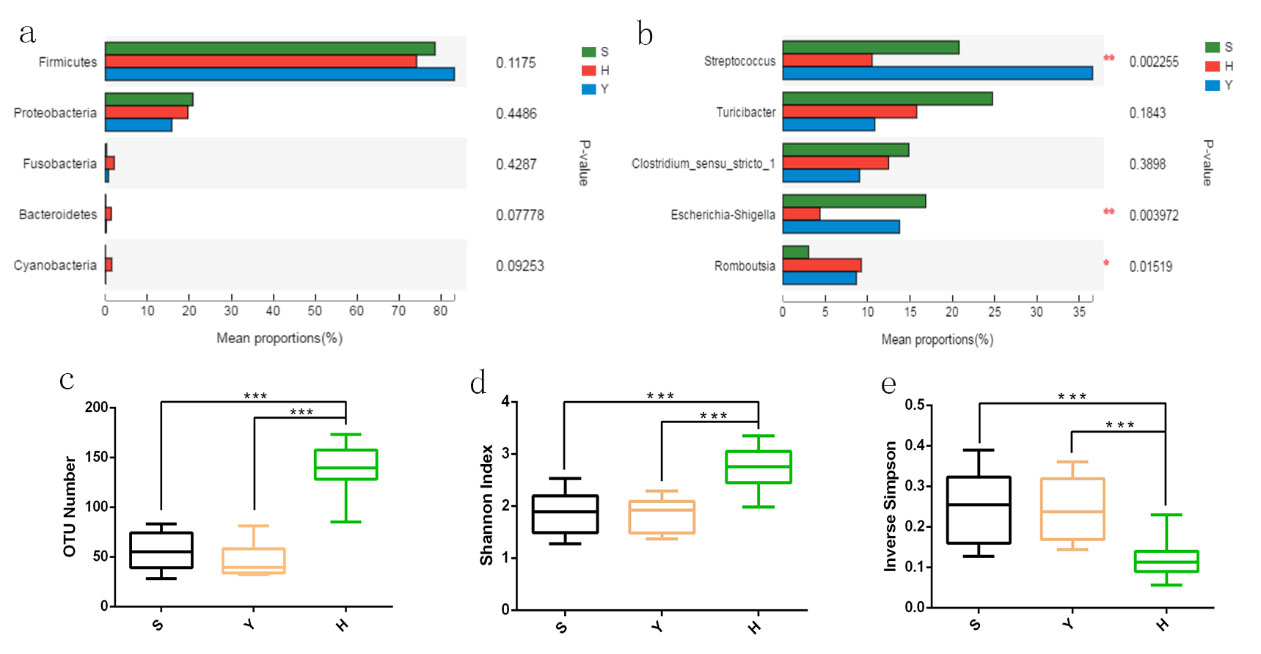课题组比较研究了来自中国不同地区(四川、云南、黑龙江)的黑熊肠道微生物分布,揭示了我国圈养黑熊的肠道微生物区系特征,并提示生物地理学因素影响黑熊的肠道微生物种属分布和结构组成。
该课题由宋璨博士主要完成,相关研究已被Molecular of Genetics and Genomics杂志接收。Molecular of Genetics and Genomics杂志于1908年创刊,是遗传学领域的第一本学术期刊,在业内具有一定影响。该项目得到了重大新药创制科技重大专项的支持。
Comparative analysis of the gut microbiota of black bears in China using high-throughput sequencing
Can Song, Bochu Wang*, Jun Tan*, Liancai Zhu, Deshuai Lou, Xiaoxi Cen

The Asiatic black bear (Ursus thibetanus) is a protected species from eastern Asia. In China, the Asiatic black bear occurs in 17 provinces from northeast to southwest regions. To date, information on microbial diversity in the gut of the Asiatic black bears from different populations remains limited. To determine the species composition and community structure of the gut microbiota in the Asiatic black bear, we characterized 36 fecal samples from Sichuan, Yunnan and Heilongjiang provinces, China, by pyrosequencing the 16S V3-V4 hypervariable regions using the Illumina Miseq platform. Results showed that Firmicutes and Proteobacteria were the predominant phyla in the samples, which were largely comprisedEscherichia-Shigella, Peptostreptococcaceae_incertae_sedis,Turicibacter,StreptococcusandClostridium. By analyzing the community structure from these 36 samples, we found there were significant differences in the species diversity and richness between Sichuan, Yunnan, and Heilongjiang populations. In conclusion, our results reveal the species composition and structure of the gut microbiota in captive black bears in China, and suggest that biogeography could affect the black bear’ gut microbiota.